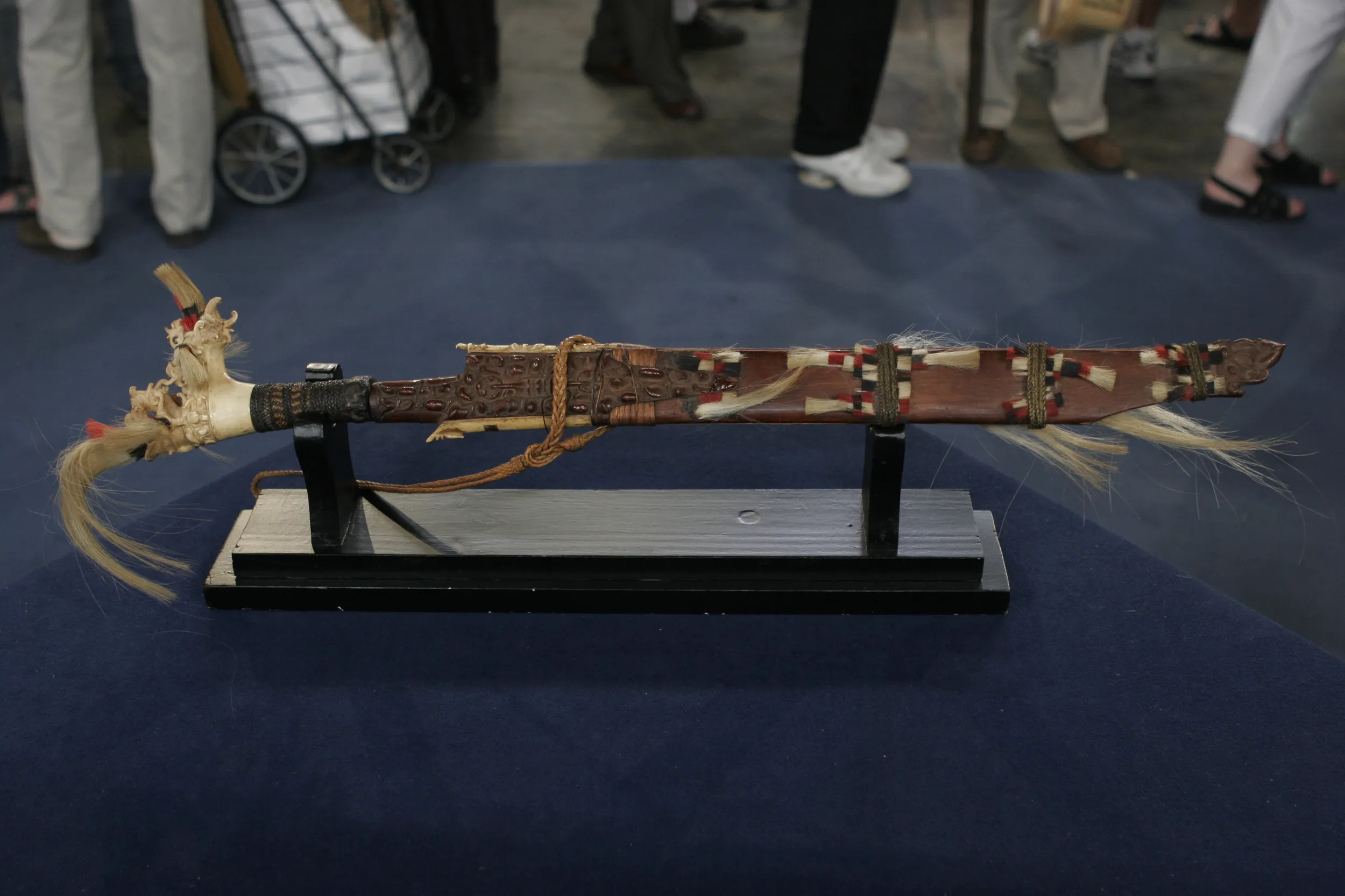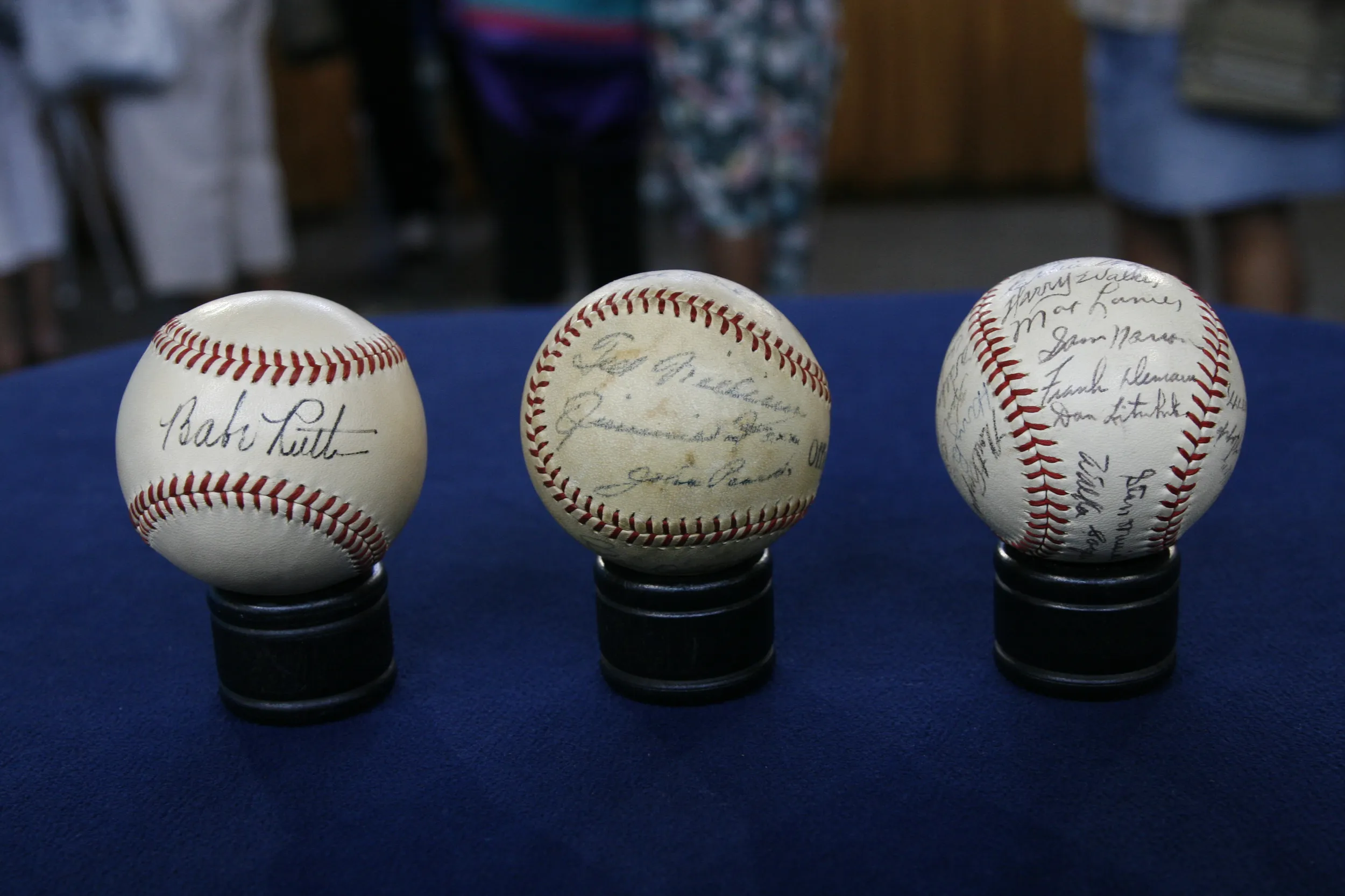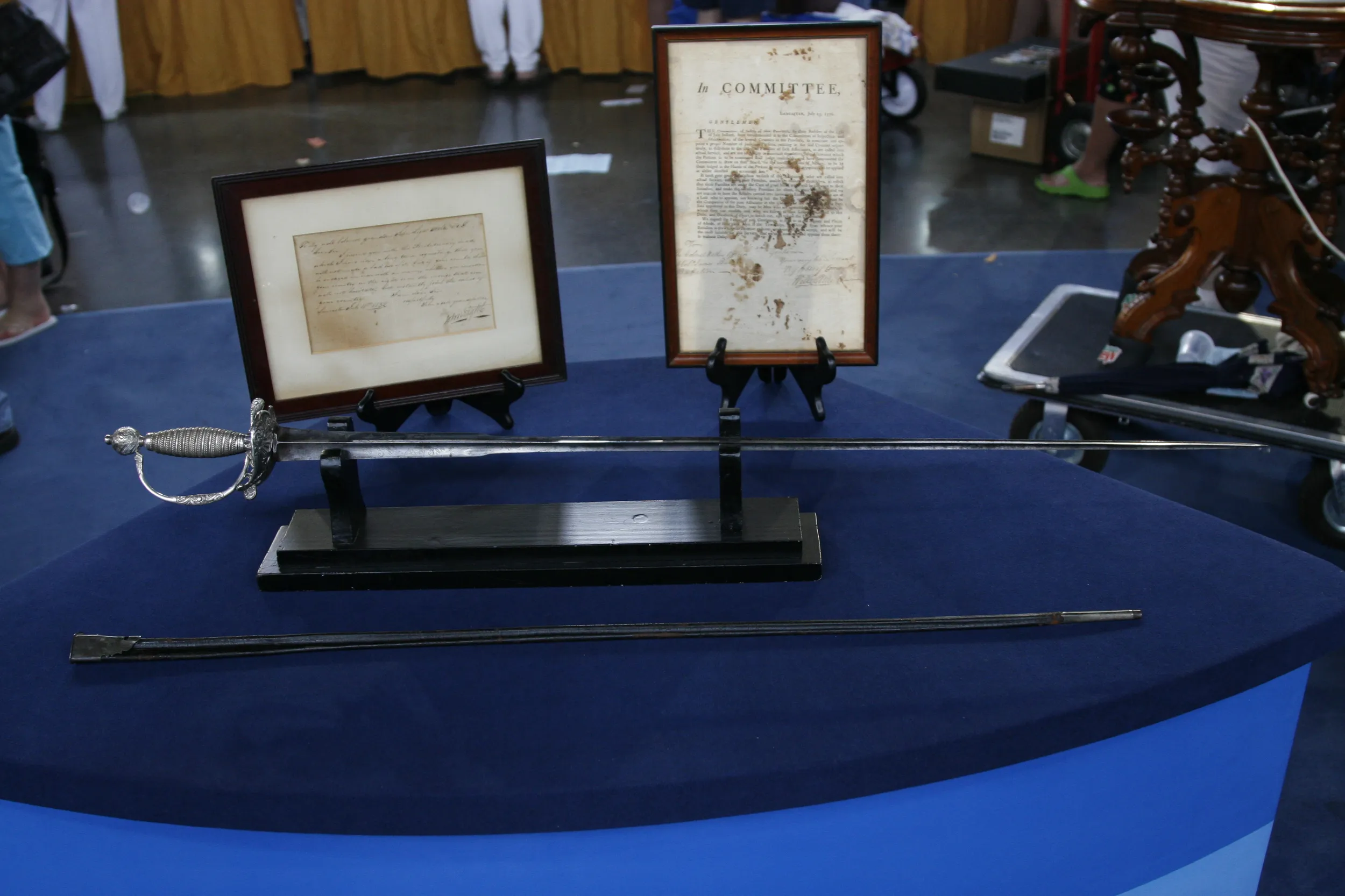GUEST: This collection was given to me by my great-uncle. He was a superintendent of the Wichita National Grasslands in Oklahoma, and he was responsible for moving out the ranchers who were grazing on the land there and restoring the land to the native wildlife. And for that, I was told, that the tribes there in appreciation gave him some of these items. I don't know if that's true or not.
APPRAISER: Well, it sounds true; a great story. What time period would this have been?
GUEST: In the 1930s.
APPRAISER: Most of this material dates quite a bit earlier than that, actually, which is probably a compliment to him because they were probably heirlooms at the time. Most of it dates to the 1880s or '90s. There are several tribes represented. In Oklahoma there was a lot of tribes living there. There was also a lot of tribes visiting in Oklahoma at that time period. Probably the most impressive piece is the dress. This is from the upper Missouri River area, and probably Yankton Sioux, and it's an adolescent's dress, a very beautiful dress. They styled them a little differently than a lot of the other Sioux groups. The next piece over here is a knife scabbard that was made by the Cheyenne. For some reason the Cheyenne favored putting figures like this. They're either dogs or horses, depending on how you interpret them. This one's made on harness leather, and it's a beautiful example of Cheyenne beadwork, probably from the late 19th century. Very intricate. The moccasins are one of my favorites. This is from the northern Montana area, probably the Assiniboine. Assiniboine material culture is pretty rare. You don't see too many moccasins. These are probably from 1880s. They're quite beautiful. They've got bifurcated tongues, and they're very desirable on the market. The pipe bag, on the other side by you, was to hold their pipe bowl and pipe stem. That's very typical Lakota work of the 1880s. Have you ever had anybody put a price on these things?
GUEST: No. Something in the family-- I'd never sell it. I might give it to museum.
APPRAISER: The dress itself-- a current value would be probably about $20,000 to $25,000.
GUEST: Holy cow!
APPRAISER: It's a nice dress.
GUEST: Whoa.
APPRAISER: Children's items are very valuable and very desirable. The Assiniboine mocs are quite beautiful. They're probably in the $5,000-to-$7,000 range. The Cheyenne knife scabbard, always desirable with pictographs on it, would be in the $5,000-to-$7,000 range.
GUEST: Oh, my goodness.
APPRAISER: The least valuable, believe it or not, is the pipe bag, which probably most people would think would be the most valuable, but that's probably a $3,000-to-$4,000 pipe bag. The total value for this group would be $33,000 to $43,000.
GUEST: That is just amazing. I am just... I'm awestruck.
APPRAISER: Well, it's a beautiful group of beadwork.







